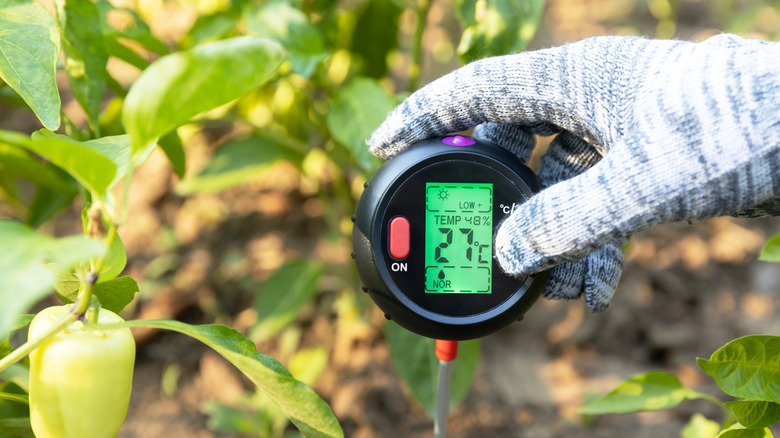How To Determine The Perfect Time To Apply Pre-Emergent To Your Lawn
We may receive a commission on purchases made from links.
If you want a lush, thick lawn through the warmer months, you'll have to control the summer weeds that should start to emerge in spring as soon as the soil warms up. As you probably know, that's precisely what pre-emergent herbicides are for. They stop those weed seeds that have been waiting idly in the ground throughout winter from growing when conditions are perfect. To apply your pre-emergent at just the right time, you'll need a way to determine when this will be. The correct application time can often vary from year to year and depends very much on the current year's general climatic conditions. So, to make sure you get it right, there's one clever test you can do to be sure you're applying your pre-emergent at the optimum time, and that is to check and monitor the temperature of your soil.
Pre-emergents work by killing young weeds just as the seeds start to germinate. When the tiny roots come in contact with the herbicide, they will simply die, and the weed won't get a chance to grow. So, as you can see, the timing is crucial. And, this is where it gets tricky because you have to pre-empt seed germination for the herbicide to do its job effectively. In fact, it's probably not worth using a pre-emergent on your grass if you're already seeing weeds. Also, bear in mind that you don't want to apply grass seed and pre-emergent at the same time because the herbicide will prevent the grass from growing.
How to check your soil before applying pre-emergent
Weed seeds are fairly optimistic and should start germinating when the soil reaches a consistent temperature of around 60 to 70 degrees Fahrenheit. Depending on where you live, it could be anytime from February right through to the middle of April. So, the best way to take the guesswork out of it is to get yourself an inexpensive soil thermometer, like this Taylor Soil Testing Thermometer. Ideally, you want to apply the herbicide once your soil temperature reaches 55 degrees Fahrenheit for five days in a row at a depth of 1 inch. At this stage, you'll need to know when it is safe to water your lawn after the pre-emergent application because moisture is required to activate the herbicide.
You also need to remember that organic herbicides, like corn gluten, will take a little longer to become active, so you want to apply these around seven to ten days before the optimum soil temperature is reached. To make it easier, you can visit the Growing Degree Days (GDD) tracker online, which starts tracking soil temperatures on February 15th. Once you put in your zip code, it should show you when your local soils have reached the optimum temperature for application. Then, it's just a case of being prepared with your thermometer and checking the temperature of your own soil to verify the information on the tracker corresponds to your physical location. Always remember, when applying any type of herbicide, to follow the directions on the pack, as over-applications could be detrimental to your lawn.

